Каноническое право: пути служения. Сравнительно-правовые очерки - [93]
As a result, the book deals with those aspects of the monastic (religious) ministry which by their very nature are more subject to canonical regulation, namely canonical status of the monasteries and canonical status of the monks (religious).
Oftentimes monastic traditions of the East and of the West are presented as opposing to each other in the sense that in the East monastic tradition is of mystic, contemplative nature, while in the West monasticism is of practical nature, and this is presented as a reason of the variety of monastic traditions in the West – due to the variety of the practical tasks to be solved.
Though there are serious grounds for such a conclusion, the difference is not to be overestimated for the sake of losing the sight of similarities. First, even acknowledging the contemplative nature of the Eastern monasticism it will not be correct to deny the input of the Eastern monasteries into solving practical issues in the secular world. On the other hand, the very “canonical fundament” of the monastic tradition of the West – the Charter of Benedict of Nursia has been compiled based on the monastic experience of the Eastern hermits. Besides, Western monasteries also possess such a treasure as “seclusion”, which serves to keep the silent retreat, contemplation, prayer as the only ministry. In other words, the very core of monasticism is similar in the West and in the East, the difference lays in the practical ways of serving the people by bringing the mystical treasures to the benefits of the particular society, the ways which depend on the nature of the society itself, because the spiritual treasures being created in the monasteries can be transferred to the lay world only to the extent and in the manner the world is able to accept.
Chapter four appears in the book as a recognition of the obvious truth that any Christian ministry, whether lay, clerical or monastic is not possible without the Church, and the chapter describes the canonical dimension of the three ecclesiastical traditions: Roman Catholic, Eastern Catholic and Russian Orthodox.
With regard to the Roman Catholic Church the book provides a brief explanation of the Supreme Authority of the Church and the governing structures of the particular churches; the Eastern Catholic ecclesiastical tradition is presented in accordance with the Eastern Code, thus the book describes in general the Patriarchal Churches, Major Archbishop Churches, Metropolitan Churches and other churches sui iuris; and the Russian Orthodox Church is presented in the unity of the Supreme, Eparchial and Parish Church governance.
Though the Church structures is the item traditionally presented as different in the various traditions, one should not overlook the similarities such as:
– the fundament of the Church structure is the local community of the faithful – the Church history has started from the local communities of the faithful, which later unified into the bigger structures. The common heirs of such a process are parishes – those small local units where the very main life of the Church takes place, and the parishes are embodied into the bigger structures, like dioceses and eparchies;
– the same basic structure of the sacred ranks – deacons, presbyters and bishops, common to the Catholic and Orthodox Churches.
The similarities are vanishing at the upper levels – indeed, the canonical status of, for example, the Patriarch of Moscow and All Russia is substantially different from that of the Pope of Rome. But, on the other hand, these differences can be viewed as different manifestations of the same process, the same task to be achieved in a different environment.
The task in question is the famous “preaching of the Gospel to all the creatures”. Given the difference in political, social, cultural realities this task could not be achieved with completely similar structures. Cultural multiplicity combined with the political fragmentation in the West has facilitated the growth of the monarchic structure of the Church of Rome, while in the East strong secular powers made the expansion of Christianity possible without a strong monarchic ecclesiastical structure. Therefore, the structural differences in different Christian ecclesiastical structures are not a deviation from the ancient canons, but the consequence of the necessity to solve similar tasks in different historical, social, cultural, political realities.
Therefore, the question whether the different Churches are viewed as opposing each other, blaming each other for deviation from the initial rules, etc. is to a very large extent the question of the choice of the observer, and to a lesser extent of the “objective content” of the canons. But the time has come when this “subjective” choice will influence the objective reality either in peaceful or dramatic way.
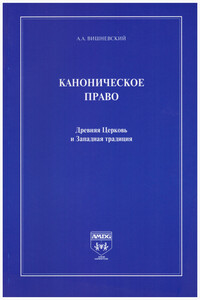
В основу книги легли лекции, прочитанные автором в ряде учебных заведений. Автор считает, что без канонического права Древней Церкви («начала начал»)говорить о любой традиции в каноническом праве бессмысленно. Западная и Восточная традиции имеют общее каноническое ядро – право Древней Церкви. Российскому читателю, интересующемуся данной проблематикой, более знакомы фундаментальные исследования церковного права Русской Православной Церкви, но наследие Западного церковного права продолжает оставаться для России terra incognita.
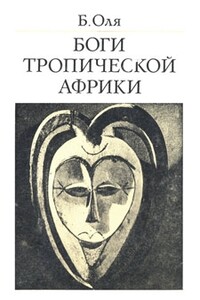
Книга французского ученого Б. Оля посвящена главным образом верованиям и культам традиционных обществ Тропической Африки. В работе использованы результаты его собственных наблюдений и исследований. Книга представляет интерес для африканистов, историков, религиоведов и всех, кто интересуется Африкой.
![Государство, религия, церковь в России и за рубежом №3 [35], 2017](/storage/book-covers/87/873574255b15d81311a50d0e7b938c7ac7b9ceef.jpg)
В книге рассказывается история главного героя, который сталкивается с различными проблемами и препятствиями на протяжении всего своего путешествия. По пути он встречает множество второстепенных персонажей, которые играют важные роли в истории. Благодаря опыту главного героя книга исследует такие темы, как любовь, потеря, надежда и стойкость. По мере того, как главный герой преодолевает свои трудности, он усваивает ценные уроки жизни и растет как личность.
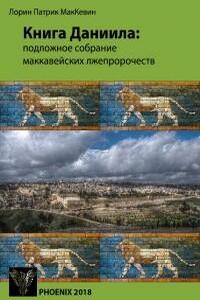
В данной работе показывается, что библейская книга Даниила, а говоря более острожно, её пророчества, являются лжепророчествами, подлогом, сделанным с целью мобилизовать иудеев на борьбу с гонителем иудейсва II в. до н.э. — царём государства Селевкидов Антиохом IV Эпифаном и проводимой им политики насильстенной эллинизации. В качесте организаторов подлога автор указывает вождей восставших иудеев — братьев Маккавеев и их отца Маттафию, которому, скорее всего, может принадлежать лишь замысел подлога. Непророческие части ниги Даниила, согласно автору, могут быть пересказом назидательных историй про некоего (может быть, вымышленного) иудея Даниила, уже известных иудеям до появления книги Даниила; при этом сам иудей Даниил, скорее всего, является «литературным клоном» древнего ближневосточного языческого мудреца Даниила. В книге дано подробное истолкование всех пяти «апокалиптических» пророчеств Даниила, разобраны также иудейское и христианское толкования пророчества Даниила о семидесяти седминах.
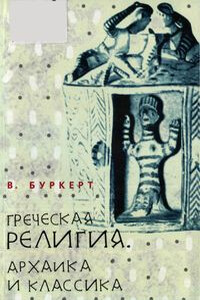
Впервые на русском языке издается книга швейцарского профессора Вальтера Буркерта о древнегреческой религии, признанная в мировой науке классическим трудом в этой области. Культы богов и героев от Микен до классической эпохи, ритуалы, мистерии, религиозная философия — эти разнообразные аспекты темы нашли свое отражение в объемном сочинении, аппарат которого содержит отсылки ко всей важнейшей научной литературе по данным вопросам. Книга окажет серьезную помощь в работе специалистам (историкам, религиоведам, теологам, филологам), но будет интересна любому читателю, интересующемуся тем, что было подлинной живой религий эллинов, но известно большинству лишь как некий набор древних мифов.
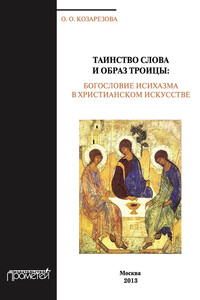
В монографии рассматривается догматический аспект иконографии Троицы, Христа-Спасителя. Раскрывается символика православного храма, показывается тесная связь православной иконы с мистикой исихазма. Книга адресована педагогам, религиоведам, искусствоведам, студентам-историкам, культурологам, филологам.
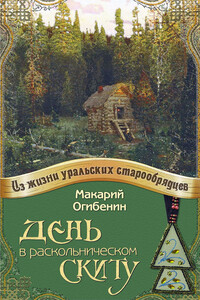
Основу книги составляет рассказ православного священника Огибенина Макария Мартиновича о посещении им раскольнического скита в Пермской губернии. С особым колоритом автор описывает быт старообрядцев конца XIX века.Текст подготовлен на основе оригинального издания, вышедшего в Санкт-Петербурге в 1902 году.Также в книгу включён биографический очерк «Исполнил клятву Богу…», написанный внучкой автора Татьяной Огибениной. В качестве иллюстраций использованы фотографии из семейного архива Огибениных.Адресовано краеведам, исследователям истории и быта староверов и всем, кому интересна история горнозаводского Урала.
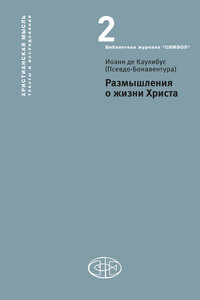
«Размышления о жизни Христа» (Meditaciones vite Christi), сочинение XIV века, которое во многих рукописях приписывается святому Бонавентуре, вероятно, написано францисканцем Иоанном де Каулибусом. Это первая всеобъемлющая биография Христа, содержащая регулярные и обширные вставки неевангельского повествовательного материала. «Размышления» позволяют читателю проникнуть в новый мир радости и любви, пробуждая в них интерес ко всему скромному, смиренному и прекрасному; они говорят о несказанном таинстве любви, которое открылось в простой, но возвышенной жизни Иисуса и Марии. Критический текст опубликован на латинском языке издательством Brepols в серии «Corpus Christianorum» в 1997 году.